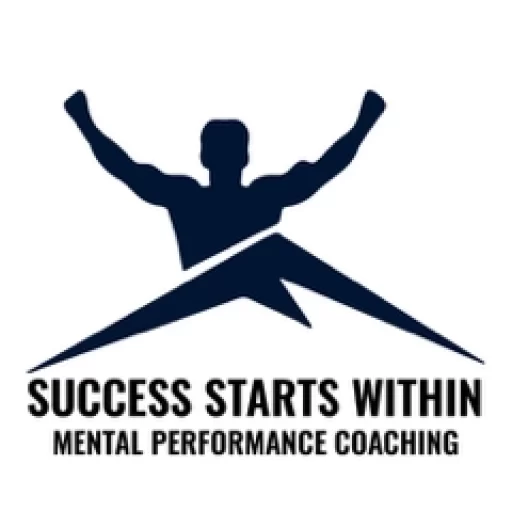The game is on the line, the stakes are high, and all eyes are on you. This is your chance to shine. But instead of thriving in the moment, you feel your heart race, your hands sweat, and your thoughts spiral.
The result?
You freeze, overthink, and underperform.
You choke.
But why does this happen? And how do some athletes seem to stay calm, collected, and deliver when it matters most?
The difference lies in the mindset.
A clutch mindset separates those who rise to the occasion from those who falter.
The good news?
You can develop a clutch mindset as an athlete. In this article, we’ll explore the characteristics of both choking and clutch mindsets and give you actionable strategies to help you build a clutch mindset for your next big moment.
Characteristics of a Choking Mindset
Choking doesn’t happen randomly. It’s the result of specific thought patterns and behaviors that take hold when pressure mounts.
Here are the key characteristics of a choking mindset:
- Overthinking: Instead of trusting your instincts and muscle memory, you overanalyze every move. This mental clutter disrupts the flow state and makes execution stiff and unnatural.
- Fear of Failure: Your focus shifts to avoiding mistakes rather than playing to win. You become consumed by the potential consequences of failure, such as letting your team down or being judged by others.
- Outcome Thinking: Instead of focusing on the process, your mind fixates on the result. Whether it’s hitting the game-winning shot or avoiding an error, this distraction pulls you out of the present moment.
- Tension and Tightness: Physical and mental tension sets in as you try to force success. This tightness prevents the free-flowing movements and confident decision-making needed for peak performance.
- Avoidance Behavior: Fear makes you play it safe. You hesitate, pass up opportunities, and shrink from the moment rather than stepping into it with confidence.
Characteristics of a Clutch Mindset
In contrast, a clutch mindset enables athletes to perform their best under pressure. Here are the hallmarks of this mindset:
- Presence and Focus: Clutch athletes stay grounded in the moment. Their focus is entirely on the task at hand, not the outcome or external distractions.
- Confidence in Preparation: They trust their skills and preparation, knowing they’ve put in the work to succeed. This confidence allows them to play freely.
- Process-Driven Thinking: Instead of worrying about the result, clutch athletes focus on controllable actions, like their form, technique, or strategy.
- Relaxed Intensity: They bring high energy and focus without letting tension take over. This balance allows them to execute with precision and poise.
- Aggressiveness and Risk-Taking: Rather than shrinking under pressure, clutch athletes lean in. They embrace the challenge and trust themselves to rise to the occasion.
How to Develop a Clutch Mindset
Becoming a clutch player isn’t about eliminating pressure or nerves; it’s about learning to perform your best despite them.
Here’s how you can build a clutch mindset:
Build Proactive Confidence
Confidence doesn’t magically appear in the heat of the moment. It’s built long before the pressure arrives, through consistent effort and intentional preparation.
To cultivate proactive confidence, start by mastering the basics of your sport. When you feel deeply skilled in the fundamentals, it becomes easier to trust yourself when the stakes are high.
Additionally, take control of your inner dialogue.
Replace self-critical thoughts with empowering statements such as, “I’ve put in the work and I’m ready for this moment.”
Positive self-talk reinforces your belief in your abilities and combats the mental noise that often leads to doubt.
Visualization is another powerful tool for building confidence. Spend time before games or practices vividly imagining yourself succeeding in high-pressure situations.
Picture yourself executing flawlessly, and engage all your senses to make the experience as real as possible. The more you rehearse success in your mind, the more natural it will feel in reality.
Finally, reflect on past successes. When doubt creeps in, remind yourself of the times you delivered under pressure. These memories serve as proof that you have what it takes to rise to the occasion.
Be Prepared
Preparation is the backbone of a clutch mindset. When you’re thoroughly prepared, you reduce uncertainty and create a foundation of confidence. Start by ensuring you’re as prepared physically as possible.
This includes not only honing your skills but also taking care of your body through proper nutrition, rest, and recovery. Physical preparation ensures you’re at your peak when it matters most.
Equally important is mental preparation. Anticipate the challenges you might face and create strategies to handle them. For example, if you know certain scenarios trigger anxiety, plan how you’ll stay focused in those moments.
Watching game film, studying opponents, and understanding strategies all contribute to feeling mentally ready to compete.
During practice, simulate high-pressure situations. Put yourself in scenarios that mimic the intensity of competition—such as needing to make the final shot or execute a perfect play under pressure. This kind of practice not only sharpens your skills but also acclimates you to performing in high stress situations.
When game day comes, preparation allows you to trust yourself. Instead of second-guessing or overthinking, you can rely on the work you’ve already put in. Being prepared transforms nerves into excitement, knowing you’ve done everything in your power to succeed.
Let Go & Just Play
In the heat of the moment, overthinking is your worst enemy. To perform at your best, you need to let go of the outcome and focus entirely on the present. This begins with sticking to your routines.
Pre-performance rituals—like taking a deep breath, bouncing the ball a certain number of times, or repeating a calming phrase—help ground you and create a sense of normalcy even in high-pressure situations.
Another key is reframing nerves. Instead of seeing them as a sign of weakness, view them as energy your body is giving you to rise to the occasion. Embrace the adrenaline and channel it into focused intensity.
To play freely, shift your focus to the process rather than the outcome. Concentrate on executing one play, one movement, or one decision at a time. By breaking the game down into manageable pieces, you stay in control and prevent your mind from wandering into unhelpful territory.
Finally, accept that mistakes are part of the game. Fear of failure only holds you back. When you allow yourself to play boldly and take risks, you’ll find that you’re capable of far more than you imagined.
Letting go doesn’t mean you don’t care; it means you trust yourself enough to stop micromanaging and start performing.
Final Thoughts
Developing a clutch mindset takes time, practice, and intentional effort. It’s not about being fearless or perfect; it’s about learning to navigate pressure and perform your best despite it.
Start by building proactive confidence, preparing thoroughly, and letting go when it matters most. With these strategies, you’ll be ready to step into big moments with the poise and confidence of a clutch athlete.
If you’re interested in a more in-depth and personalized approach to building a clutch mindset, click here to learn more about one-on-one mental performance coaching.
Remember, clutch players aren’t born—they’re made. And you have everything it takes to develop this mindset and thrive under pressure.
Thank you for reading and I wish you the best of success in all that you do.





